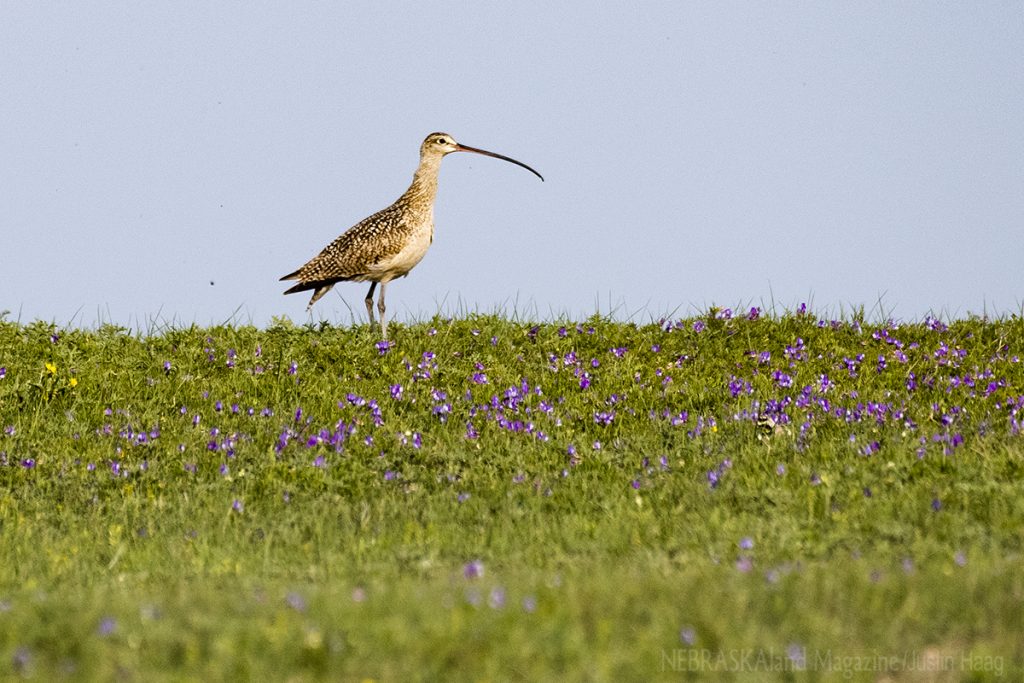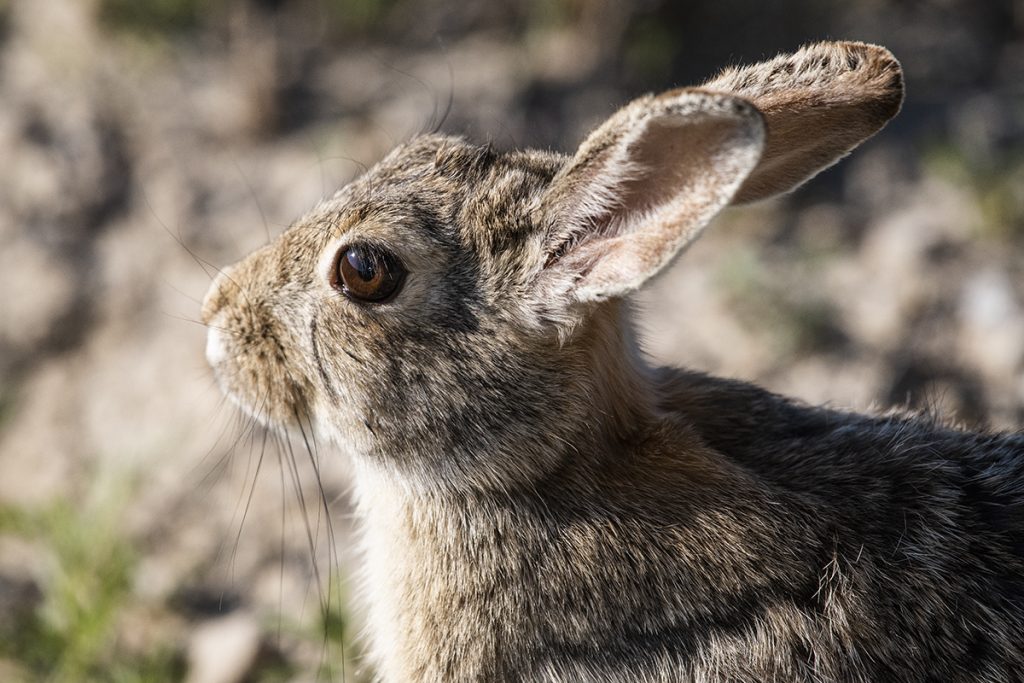Spring and early summer is a magical time of year that leaves us too quickly. It seems I never get out with the cameras as much as I want to during this period, but usually end up with a few keeper images, anyway. Here is a collection of random photos from recent weeks.
I am often amused when any given chamber of commerce or tourism bureau brags on its sunrises and sunsets being the best. (Since we are all watching the same sun, I guess they are right). I must say, though, the Pine Ridge – with its rugged landscape and relatively sparse manmade structures to muck up the scene — is an exceptional place to watch it happen. One convenient place for catching a sunrise or sunset that rarely disappoints is the Black Hills Overlook Road on U.S. Forest Service property, accessible from Chadron State Park.
Death camass (Toxicoscordion venenosum), as the name implies, is not something a person without a death wish should want to eat. Yes, it’ll kill you. It sure does make great eye candy with this setting sun on a hazy evening on the Oglala Grassland, though.
Woodpeckers, which spend a majority of their time clinging to the sheer sides of trees and posts, have feet that differ from most other birds. This red-headed woodpecker (Melanerpes erythrocephalus) is using its zygodactyl feet – with two claws forward, two back — to grip a post. This arrangement differs from the most common one among birds, which is the perch-friendly anisodactyl – three toes in front and one in back.
Northwestern Nebraska was granted many water puddles this spring, and it seemed almost every puddle was granted at least one pair of northern shovelers (Anas clypeata). Similar to many other ducks, they use those big bills to sift food from the water. They do so with lamellae, small comb-like structures that resemble teeth and act as a strainer. While most dabbling ducks have from 50-70 lamellae, shovelers have about 220 on their lower mandible and 180 on the upper. That’s some serious sifting power.
Speaking of big bills, a long-billed curlew (Numenius americanus) strolls among the wildflowers in the grasslands. These bills do not sift water, but rather probe for insects. While wintering in Mexico, curlews use them to reach invertebrates below the water’s surface, such as shrimp and crabs.
I had a lot of discussion with wildlife expert friends about this character on the Oglala National Grassland, in an attempt to determine if it is just another eastern cottontail (Sylvilagus floridanus) as is common throughout the state, or a desert cottontail (Sylvilagus audubonii), a species most common in the Southwest known to reside in this part of the Panhandle. Alas, they say it can be nearly impossible to tell them apart without having the specimen in hand. I’m not quite quick enough catch a rabbit, and killing one just for ID purposes seems extreme, not to mention unlawful, so I’ll have to explain the possibility of it being either of the two species when captioning it for the Nebraskaland database.
When standing before a scene such as this, I realize that I do not attend nearly enough sunrises near the water. It’s not so much that I need more sunrise photos at lakes. It’s just that it’s good for the soul. This one was captured at the incredibly still Walgren Lake on the edge of the Sandhills near Hay Springs.
Early mornings after a rainy night are a good time to reach for the macro lens and get close-up to subjects. Whether hanging on the edge of the leaf, perched upon the flower of shell-leaf penstemon (Penstemon grandiflorus), adding spark to foxtail barley (Hordeum jubatum), or accentuating the impressive construction of an orb weaver spider (Araneidae), water droplets make scenes especially photogenic.
With a landscape so green from timely rains, this scene seems far removed from the tinderbox dry conditions of 2012 that caused the raging wildfire and left these sticks at Bighorn Wildlife Management Area. Green is good.
I have photographed Sugarloaf Butte, which is on private property adjacent to the Oglala National Grassland in northern Sioux County, numerous times. Given its distinct shape and the absence of any nearby visual obstructions, I can often see it from my house in Chadron. I was in the Pine Ridge of Dawes County more than 20 miles away when I captured this image with stock pond in the foreground and Sugarloaf still visible on the horizon.
Fort Robinson State Park is a beautiful place, but is impossible to capture in a single image from the ground because of its large footprint. By using a long lens at a distance, one is able to capture some of the historical structures along with those beautiful buttes. There’s still so much more to see there, though.
Birds in the family of tyrant flycatchers (Tyrannidae) are fun to observe when they are on the hunt, unless you’re an insect. Their aerial acrobatics make them proficient at capturing flying prey in mid-air. Many of these birds sometimes hover to zero in on an insect as this western kingbird (Tyrannus verticalis) is doing at Bighorn Wildlife Management Area. On another day, I was not skillful enough to photograph the smaller but also handsome western wood pewee (Contopus sordidulus) in a similar aerial pose, but enjoyed watching it slaughter many insects in the Nebraska National Forest, anyway. Too grisly?
Capturing a wild turkey (Meleagris gallopavo) photo is certainly no great accomplishment in a region that has so many. I’m having a hard time pinpointing anything special about this camera-trap image of turkeys moving along a game trail near a cold-water stream in the Pine Ridge, but I like it. March on, turkeys.
As perhaps the most prominent landmark in the Pine Ridge, Crow Butte is visible throughout much of the region and often catches my eye — especially when the light is good. Despite a hefty stockpile of Crow Butte images already in the bag, I was compelled to snap this photo while atop the also picturesque Cheyenne Buttes at Fort Robinson State Park.
Accentuated by a bouquet of desert sandwort (Eremogone hookeri), the rocky top of the Cheyenne Buttes stand high above the White Valley. Organisms that can thrive while growing from a rock, such as desert sandwort and the lichens near it, profess that we all have our place to “bloom.”
I love it when ponderosa pines (Pinus ponderosa), as if performing before a spotlight, catch rays of sunshine.
As long as I live, I’ll surely get excited when catching glimpse of a bighorn sheep (Ovis canadensis) in this country – no matter how far away.
Cottonwoods (Populus) look especially good on misty mornings in Sheridan County.
As do cows, too busy eating among the lush grass to mind the photographer and strike a pose.
Coldwater streams such as East Ash Creek give motion to an otherwise quiet scene. It’s a good kind of motion.
Decaying logs often fascinate me in how they can support a whole community of life. While many plant species are thriving on this one, there are also surely many insects thankful that this tree met its demise and are using it as well.
Buck pronghorn (Antilocapra americana) are looking regal this time of year. Unlike deer, which lose their antlers in late winter, pronghorn shed the sheaths of their horns in late fall and early winter.
So many of these photos were taken with background music from a chorus of feathered friends. The lead singer? Our state bird, the western meadowlark (Sturnella neglecta), of course.
I shoot many other photos besides just nature images – many that even include people in them. When getting serious about seeking nature images, though, I usually prefer to be alone – or, maybe just out with the dog. Seems I do a better job when I can lend my undivided attention to the scenes before me without the weight of conversation. I must say, though, I always enjoy exploring this beautiful land with those who share a love for it. Whether it is a bike ride with my daughter or a mountain lion scat survey, it seems each venture deepens my appreciation for the natural gifts we’ve been given while providing a shared experience in the enjoyment. We say it so often that it may sound trite, but our agency’s motto still rings true: Time outdoors is time well spent.
The post A magical time in northwestern Nebraska appeared first on Nebraskaland Magazine.


















































